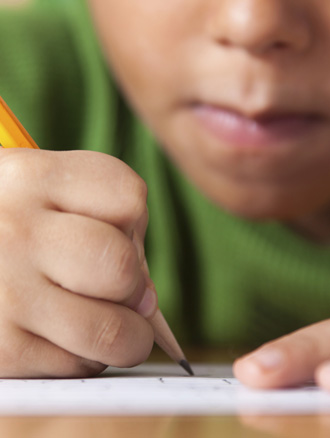September
High take-up of private tuition by primary school pupils revealed

Nearly half of 11-year-olds among some minority ethnic groups in the UK are receiving private tuition outside of school, research has revealed.
Children categorised as from Chinese, black or Indian backgrounds are more than twice as likely to be tutored as their white peers. These three minority ethnic groups also seem to be doing more homework, on average, than white children.The findings come as part of a major research project which is being presented at BERA today (Weds). It will raise questions about what is driving the impressive recent record of pupils from some minority ethnic groups in school league tables: what happens in school or what takes place outside of it.
Researchers from Newcastle University's School of Education, Communication and Language Sciences and NatCen Social Research, the social research institute, have been studying how a cohort of 19,000 pupils, all born in 2000-1, spend their lives outside of school. They analysed data for the children which were collected when they were aged five, seven and 11.
By the age of seven, averaged across all ethnic groups, some five per cent of primary pupils were receiving private tuition, the research found. By the age of 11, the corresponding figure rose to 22 per cent.
Breaking down the figures by pupils’ ethnic backgrounds revealed stark differences. At seven, private tuition was most common among children of Indian backgrounds, already being taken up by one in five such pupils, or 20 per cent. It was least prevalent among white pupils, at three per cent.
By 11, the ethnic group with the highest take-up of private tuition was “other ethnic origin”, which includes Chinese pupils, at 48 per cent. Some 47 per cent of black children received private tuition, while the figure for Indian pupils was 42 per cent. For white children, it was 20 per cent.
These figures suggest high proportions of pupils’ results in education league tables, which are designed to measure school performance and on which schools are held to account by the government, may be influenced by out-of-school tuition, particularly for some ethnic groups.
The time spent on homework also varied significantly by ethnicity, the researchers found. A quarter of Chinese and “other ethnic origin” pupils spent at least five hours a week on homework, while the figures for Indian and black children were 24 per cent and 20 per cent respectively. For white children, the figure was only seven per cent.
Chinese 11-year-olds were also more likely to receive out-of-school music tuition paid for by their parents: some 31 per cent did so, compared to 22 per cent among white children and 19 per cent among Indian pupils.
Recent government primary test data for England underline the often remarkable success rates of Chinese and Indian pupils in particular. For example, the proportion of Chinese pupils achieving the top grade – level 6 –in maths tests for 11-year-olds in 2014 was 35 per cent. This was more than four times the rate for white children, at eight per cent.
Liz Todd, Professor of Education Inclusion at Newcastle University, who will outline the research study today, said the findings raised questions about possible differing attitudes to school provision between different ethnic groups.
She said: “Clearly some ethnic groups are feeling a greater need to supplement the work of schools than others. Does this mean some parents are lacking confidence in what goes on during school hours? Or are they just more likely to see tuition as a worthwhile route to help their children succeed? It is not clear from the numbers themselves, but the figures for private tuition are certainly high among some groups. We also need to look at the gains in pupil attainments across groups and ask to what extent these are due to changes in teaching, school reforms or the provision of tuition at home.”
The study also revealed that on average nearly half of all 11-year-olds – 47 per cent – spend at least an hour every school night playing computer games, with that figure rising to 62 per cent among boys, compared to 33 per cent among girls. Girls were instead more likely to read for enjoyment: 53 per cent said they read for pleasure “most days”, compared to 36 per cent of boys.
And the researchers found greatly varying take-up of music and sport provision outside of school according to the social backgrounds of pupils. Some 43 per cent of 11-year-olds whose mother had a postgraduate degree reported receiving paid-for music lessons, compared to only six per cent whose mother had no formal qualifications. And 80 per cent of 11-year-olds whose mother had a degree did organised physical activities outside of lesson time at least weekly, compared to 56 per cent among those whose mother had no formal qualifications.
Unequal access to Out of School Activities and the education gap is being presented to BERA by Professor Liz Todd and Karen Laing of Newcastle University and by Dr Emily Tanner, Jenny Chanfreau, Meg Callanan, Amy Skipp and Jonathan Paylor of NatCen Social Research on Wednesday 16 September.
published on: 16 September 2015
